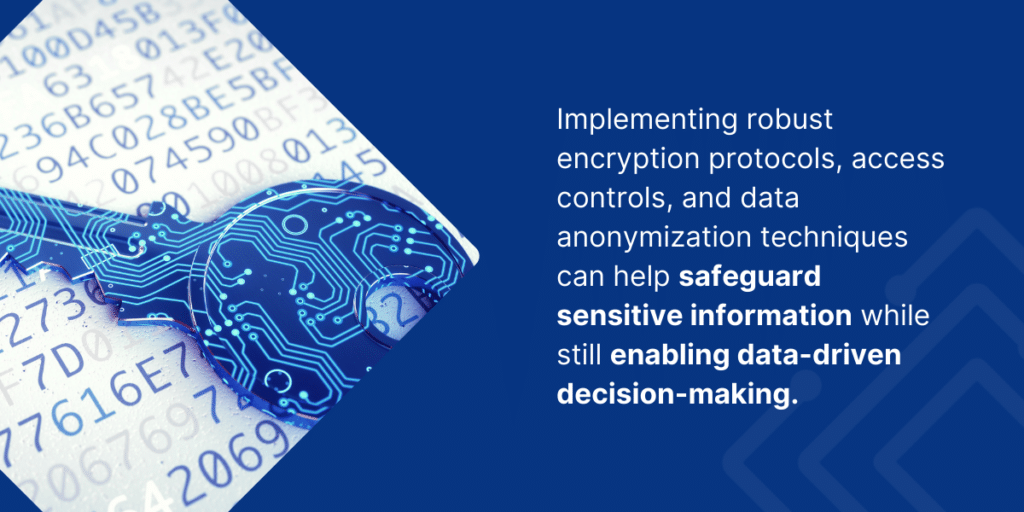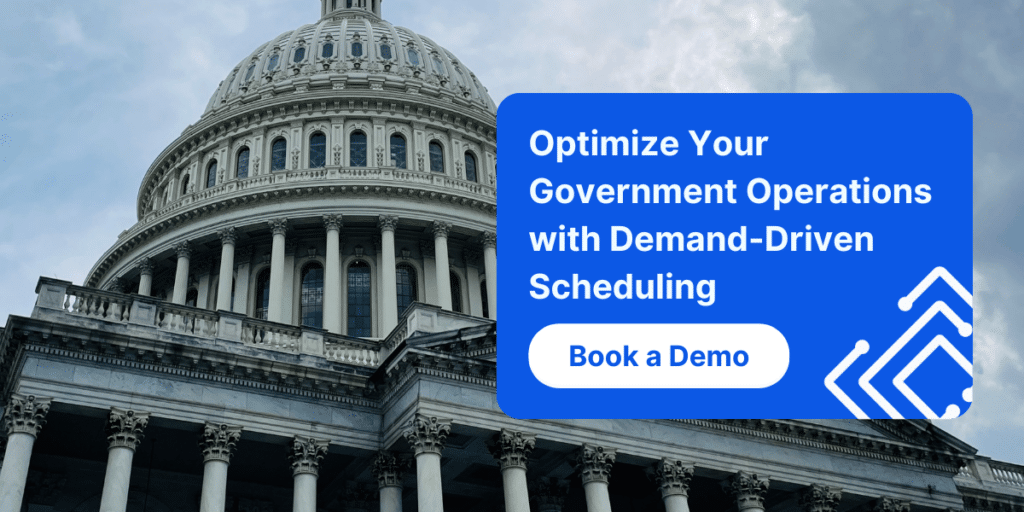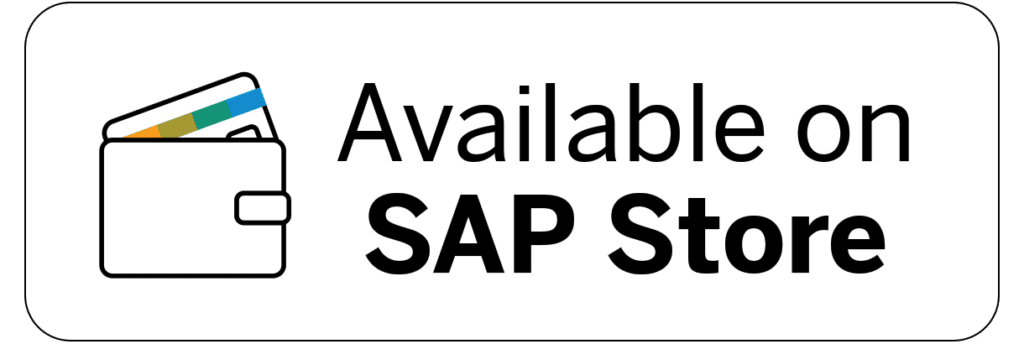In the intricate dance of governance, where resources are finite and demands are constant, efficient scheduling emerges as a linchpin for success. Government agencies, tasked with delivering essential services and managing complex operations, must navigate a delicate balance between resource allocation and service delivery. Enter demand-driven scheduling—a strategic approach poised to revolutionize how government entities manage their workflows and optimize their operations.
Efficient scheduling lies at the heart of effective governance. Whether it’s allocating staff for public services, coordinating infrastructure projects, or managing legislative sessions, the ability to optimize resources and streamline processes is crucial. In a world where every taxpayer dollar counts, maximizing efficiency becomes not just a goal but a necessity for government agencies.
As we delve deeper into the realm of demand-driven scheduling, it becomes evident that its potential benefits are vast and far-reaching. From improved resource allocation to enhanced service delivery, this innovative approach holds the key to transforming government operations for the better. Let’s explore how demand-driven scheduling can revolutionize the way governments work and serve their constituents.
Understanding Demand-Driven Scheduling
In the intricate web of government operations, where efficiency is paramount and resources are limited, the concept of demand-driven scheduling emerges as a beacon of innovation. By harnessing real-time data and adaptive strategies, demand-driven scheduling offers a transformative approach to managing workflows and optimizing resource allocation within government agencies.
Definition of Demand-Driven Scheduling
At its essence, demand-driven scheduling is a methodology that prioritizes responsiveness to current demand signals rather than adhering to static schedules or historical patterns. It embodies a dynamic and adaptive approach, where schedules are continuously adjusted based on fluctuating demand, ensuring that resources are allocated efficiently to meet evolving needs.
The principles of demand-driven scheduling revolve around agility, flexibility, and data-driven decision-making. By leveraging advanced analytics and predictive modeling, government agencies can anticipate demand trends, allocate resources proactively, and respond swiftly to emerging challenges or opportunities.
Traditional Scheduling vs. Demand-Driven Approaches
Traditional scheduling methods often rely on fixed schedules and rigid frameworks, which may not adequately account for fluctuations in demand or unexpected disruptions. These approaches tend to be reactive rather than proactive, resulting in inefficiencies, delays, and suboptimal resource utilization.
In contrast, demand-driven scheduling represents a paradigm shift in how government agencies approach their scheduling processes. Rather than adhering to pre-determined schedules, demand-driven approaches prioritize real-time demand signals, enabling agencies to allocate resources more effectively and deliver services more efficiently.

Key Components of Demand-Driven Scheduling
Demand-driven scheduling systems are characterized by several key components that distinguish them from traditional scheduling platforms:
- Real-time Data Integration: Demand-driven scheduling systems leverage real-time data from various sources, including user requests, service utilization metrics, and external factors such as weather or traffic patterns.
- Predictive Analytics: Advanced analytics and predictive modeling techniques enable agencies to forecast future demand trends, anticipate resource requirements, and optimize scheduling decisions accordingly.
- Adaptive Algorithms: Demand-driven scheduling algorithms are designed to be adaptive and responsive, continuously adjusting schedules based on changing demand patterns and operational constraints.
- Collaborative Decision-Making: These systems facilitate collaboration and communication among stakeholders, allowing for coordinated decision-making and resource allocation across multiple departments or agencies.
- Performance Monitoring and Optimization: Demand-driven scheduling systems incorporate performance monitoring tools that enable agencies to track key metrics, identify inefficiencies, and implement continuous improvement initiatives.
Demand-driven scheduling represents a fundamental shift in how government agencies manage their operations. By embracing agility, flexibility, and data-driven decision-making, these agencies can enhance efficiency, improve service delivery, and ultimately better serve the needs of their constituents.
Scheduling Challenges For Government Agencies
As government agencies explore the potential of demand-driven scheduling to optimize their operations, they must navigate various challenges and considerations that accompany the adoption of this innovative approach. From technological hurdles to organizational resistance, addressing these challenges is essential to realizing the full benefits of demand-driven scheduling.
Technological Infrastructure and Compatibility Issues
One of the primary challenges in implementing demand-driven scheduling is ensuring that the necessary technological infrastructure is in place. This includes robust data management systems, real-time analytics capabilities, and interoperable software platforms. Many government agencies operate on legacy systems that may not be compatible with modern scheduling solutions, necessitating significant investments in IT infrastructure upgrades and integration efforts.
Moreover, ensuring the reliability and scalability of technology infrastructure is crucial, particularly for agencies tasked with delivering critical services to citizens. System downtime or performance issues could have far-reaching consequences, underscoring the importance of rigorous testing and maintenance procedures.
Stakeholder Buy-In and Organizational Resistance
Another significant challenge is securing buy-in from stakeholders across the organization. Demand-driven scheduling represents a departure from traditional scheduling methods, requiring a cultural shift and new ways of thinking about resource allocation and workflow management. Resistance to change is natural, particularly among employees accustomed to established processes and routines.
To overcome organizational resistance, government agencies must engage stakeholders proactively, communicate the benefits of demand-driven scheduling, and involve employees in the decision-making process. Demonstrating tangible improvements in efficiency, service delivery, and employee satisfaction can help build momentum and foster a culture of innovation within the organization.
Privacy and Data Security Concerns
In an era of heightened awareness around data privacy and security, government agencies must prioritize the protection of sensitive information when implementing demand-driven scheduling systems. Collecting and analyzing real-time data on citizen behavior and service usage can provide valuable insights for optimizing scheduling decisions. However, agencies must ensure that appropriate safeguards are in place to protect individual privacy rights and prevent unauthorized access or misuse of data.
Compliance with relevant regulations, such as the General Data Protection Regulation (GDPR) or the Health Insurance Portability and Accountability Act (HIPAA), is essential to mitigate legal risks and maintain public trust. Implementing robust encryption protocols, access controls, and data anonymization techniques can help safeguard sensitive information while still enabling data-driven decision-making.

Benefits of Demand-Driven Scheduling in Government
In the realm of government operations, where the efficient allocation of resources and the delivery of timely services are paramount, demand-driven scheduling emerges as a game-changer. By prioritizing responsiveness to real-time demand signals, demand-driven scheduling offers a host of benefits that can revolutionize how government agencies operate and serve their constituents.
Improved Resource Allocation
- Utilization of Resources Based on Actual Demand: Demand-driven scheduling enables government agencies to allocate resources more effectively by aligning them with actual demand. Rather than relying on static schedules or historical patterns, agencies can adjust resource allocation in real-time to meet fluctuating demand, ensuring that resources are deployed where they are most needed.
- Reduction of Waste and Redundancy: By accurately matching resource supply with demand, demand-driven scheduling minimizes waste and redundancy within government operations. This leads to more efficient use of taxpayer dollars and maximizes the impact of limited resources, ultimately enhancing the overall effectiveness of government services.
Enhanced Service Delivery
- Increased Responsiveness to Citizen Needs: Demand-driven scheduling enables government agencies to be more responsive to the needs of citizens by aligning service delivery with actual demand. Whether it’s providing essential services, responding to emergencies, or addressing citizen inquiries, agencies can adjust their schedules in real-time to ensure timely and efficient service delivery.
- Reduced Waiting Times and Service Delays: By optimizing resource allocation based on demand, demand-driven scheduling helps reduce waiting times and service delays for citizens. Whether it’s scheduling appointments, processing permits, or delivering public services, agencies can streamline their workflows to minimize wait times and improve the overall customer experience.
Cost Savings and Efficiency Gains
- Optimization of Workforce Utilization: Demand-driven scheduling allows government agencies to optimize workforce utilization by aligning staffing levels with actual demand. This helps prevent overstaffing during periods of low demand and ensures that agencies have the right resources in place to meet peak demand when necessary, leading to cost savings and efficiency gains.
- Reduction of Overtime and Operational Costs: By accurately forecasting demand and adjusting schedules accordingly, demand-driven scheduling helps reduce overtime and operational costs for government agencies. By avoiding unnecessary overtime expenses and optimizing the use of resources, agencies can achieve significant cost savings while maintaining high levels of service quality.
Data-Driven Decision Making
- Utilization of Real-Time Data for Informed Decision Making: Demand-driven scheduling relies on real-time data analytics to inform scheduling decisions. By analyzing data on demand patterns, service utilization, and other relevant factors, government agencies can make informed decisions about resource allocation and service delivery, leading to better outcomes for citizens.
- Ability to Adapt and Adjust Schedules Based on Changing Demand Patterns: One of the key advantages of demand-driven scheduling is its flexibility and adaptability. Government agencies can adjust schedules on the fly in response to changing demand patterns, ensuring that resources are always deployed where they are most needed. This agility allows agencies to respond quickly to emerging challenges or opportunities, ultimately enhancing the effectiveness of government operations.

Technology and Tools for Demand-Driven Scheduling
In the digital age, technology serves as a catalyst for innovation across all sectors, including government operations. Demand-driven scheduling, with its emphasis on agility and responsiveness, relies heavily on advanced technological solutions to optimize resource allocation and enhance service delivery within government agencies.
At the forefront of this technological revolution lies cloud-based workforce planning and scheduling solutions like Indeavor. These types of platforms serve as indispensable tools, offering an array of features meticulously crafted to streamline scheduling processes. From real-time scheduling to efficient resource allocation and task assignment functionalities, workforce management solutions provide a centralized hub for managing schedules and orchestrating workflows. By harnessing such platforms, government agencies can promptly respond to shifting demands and optimize resource utilization with precision.
One of the paramount advantages of demand-driven scheduling lies in its reliance on data analytics and predictive modeling to inform scheduling decisions. Through the analysis of historical data, current demand trends, and various pertinent factors, agencies can glean actionable insights that inform their scheduling strategies. By seamlessly integrating with data analytics and predictive modeling tools, these scheduling solutions empower agencies to anticipate demand, discern patterns, and optimize schedules, thereby serving the needs of citizens more efficiently.
Innovate With Indeavor’s Cloud-Based Scheduling Solution
We implore government agencies to seize the opportunities presented by this forward-thinking approach and harness technology to refine their scheduling processes, thereby elevating service delivery standards. Embracing demand-driven scheduling isn’t just a choice; it’s a pathway to enhanced efficiency, reduced costs, and heightened citizen satisfaction.
In this landscape of innovation, cloud-based solutions like Indeavor’s workforce planning and scheduling platform stand out as beacons of possibility. With features tailored to the unique needs of government agencies, such as real-time data integration and predictive analytics, platforms like Indeavor empower agencies to optimize scheduling decisions with unparalleled precision and effectiveness.
As we gaze ahead, the horizon of demand-driven scheduling unfolds with boundless potential. With the continued evolution of technology, we anticipate the emergence of even more sophisticated tools and platforms, driven by artificial intelligence and fueled by advanced predictive analytics capabilities. The possibilities for enhancing government operations through demand-driven scheduling are truly limitless.
Looking to see how our automated scheduling solution can help your organization achieve true workforce efficiency—from both your hourly employees as well as your HR and Operations departments? Learn more or request a demo here.
About the Author
Claire Pieper is the Marketing Communications Coordinator for Indeavor. In her role, she specializes in
crafting strategic and engaging content, ensuring that customers are well-informed. Claire is dedicated
to enhancing the customer experience and optimizing the user journey through Indeavor’s solutions. To
learn more or get in touch, connect with Claire on LinkedIn.







